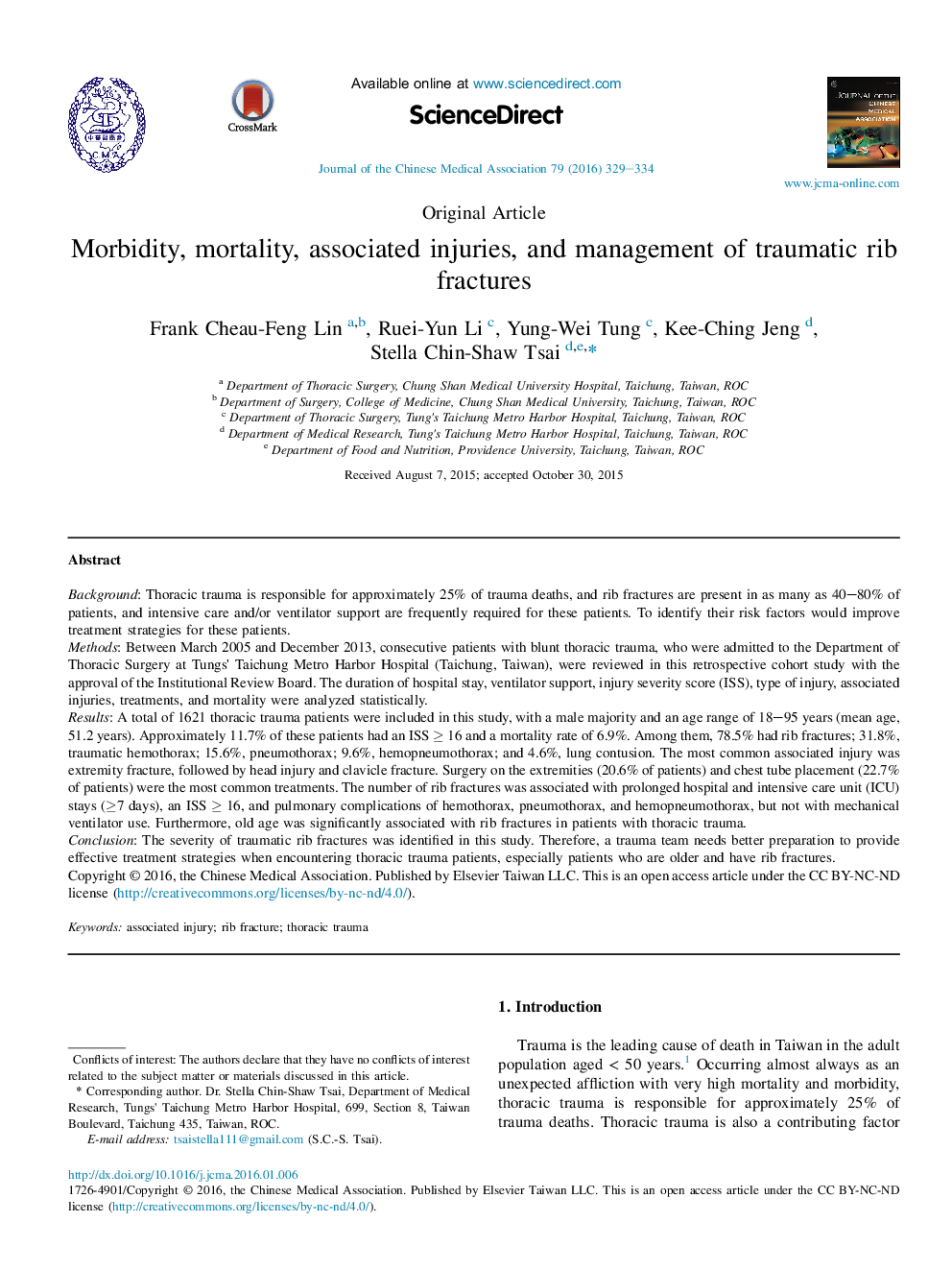| Article ID | Journal | Published Year | Pages | File Type |
|---|---|---|---|---|
| 3475746 | Journal of the Chinese Medical Association | 2016 | 6 Pages |
BackgroundThoracic trauma is responsible for approximately 25% of trauma deaths, and rib fractures are present in as many as 40–80% of patients, and intensive care and/or ventilator support are frequently required for these patients. To identify their risk factors would improve treatment strategies for these patients.MethodsBetween March 2005 and December 2013, consecutive patients with blunt thoracic trauma, who were admitted to the Department of Thoracic Surgery at Tungs' Taichung Metro Harbor Hospital (Taichung, Taiwan), were reviewed in this retrospective cohort study with the approval of the Institutional Review Board. The duration of hospital stay, ventilator support, injury severity score (ISS), type of injury, associated injuries, treatments, and mortality were analyzed statistically.ResultsA total of 1621 thoracic trauma patients were included in this study, with a male majority and an age range of 18–95 years (mean age, 51.2 years). Approximately 11.7% of these patients had an ISS ≥ 16 and a mortality rate of 6.9%. Among them, 78.5% had rib fractures; 31.8%, traumatic hemothorax; 15.6%, pneumothorax; 9.6%, hemopneumothorax; and 4.6%, lung contusion. The most common associated injury was extremity fracture, followed by head injury and clavicle fracture. Surgery on the extremities (20.6% of patients) and chest tube placement (22.7% of patients) were the most common treatments. The number of rib fractures was associated with prolonged hospital and intensive care unit (ICU) stays (≥7 days), an ISS ≥ 16, and pulmonary complications of hemothorax, pneumothorax, and hemopneumothorax, but not with mechanical ventilator use. Furthermore, old age was significantly associated with rib fractures in patients with thoracic trauma.ConclusionThe severity of traumatic rib fractures was identified in this study. Therefore, a trauma team needs better preparation to provide effective treatment strategies when encountering thoracic trauma patients, especially patients who are older and have rib fractures.
